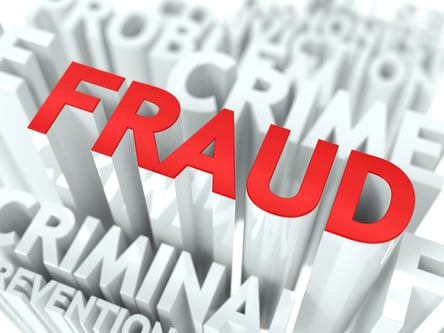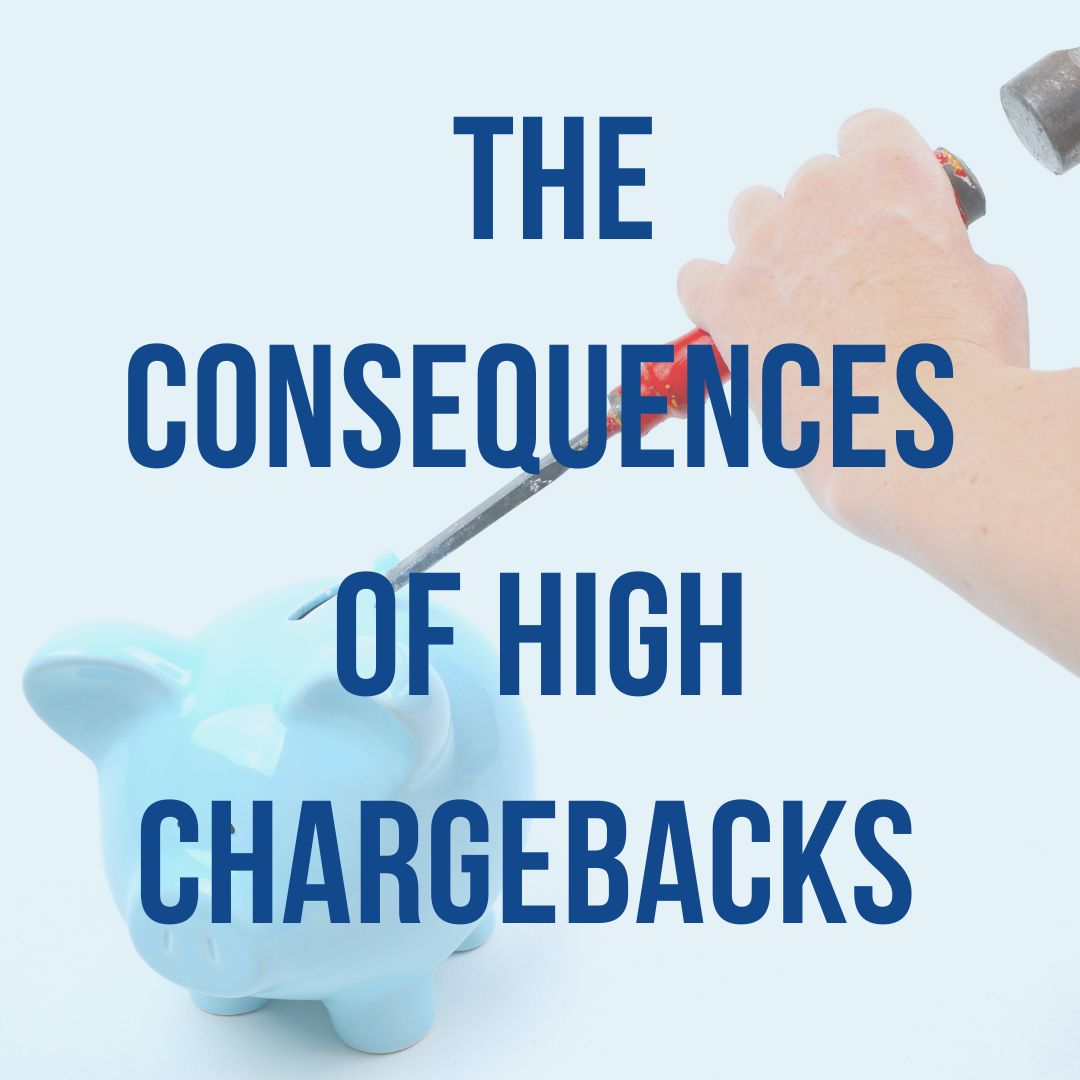 To some it may seem like the Holiday Season is over and it's a brand new year to focus on. But for retailers, the first few months of the year bring another challenging season. Refund and Chargeback Season. Like Spring run-off follows Winter, Refund and Chargeback Season flows rampantly from the busy holiday shopping season.
To some it may seem like the Holiday Season is over and it's a brand new year to focus on. But for retailers, the first few months of the year bring another challenging season. Refund and Chargeback Season. Like Spring run-off follows Winter, Refund and Chargeback Season flows rampantly from the busy holiday shopping season.
But this year, merchants aren't just dealing with excessive refunds and credit card chargebacks. They're also seeing a significant increase in the fraudulent abuse of chargebacks and refund policies.
Fraud increases year over year historically. And those numbers have jumped more than normal with the recent surge in mobile and eCommerce shopping. But this most recent holiday season set records. The holiday season is always a time of year when fraudsters get excited. They're champing at the bit to take advantage of the biggest shopping season of the year. And boy, did they succeed at their goals over the 2021 holiday season.
Refund fraud, return fraud, and chargeback fraud are running rampant, and it's not so friendly. Fraud was at an all-time high this last season. Between Thanksgiving Day and Cyber Monday, a full 19.66% of all eCommerce transactions were suspected fraudulent. And that represents a 25% increase over the rest of the year.
Retailers have a huge task when it comes to pleasing customers and meeting fraud head on.
The retailer’s first biggest concern is creating a fluid and user friendly customer experience across all channels. But their next immediate concern is how to keep the sensitive consumer data secure.
During the holidays, the biggest concern is filling orders while maintaining security and preventing fraud. But the last thing they're thinking about is their Payment Processing and the role it plays.
We’ve just had huge sales. And there will inevitably be an influx of returned products, refunds, and chargebacks. But this year, there’s been a distinct difference from return seasons of the past.
Merchants are experiencing a concerning rise in both “friendly fraud”, or chargeback fraud, and Refund Fraud.
Friendly fraud, also referred to as chargeback fraud, is a consumer problem that is becoming more common.
Friendly fraud occurs when a customer intentionally contacts the bank directly to initiate a refund request instead of contacting the seller. They choose this path to take advantage of credit card protections in order to violate company policy. This allows them to keep purchased products without paying for them.
Return fraud is a premeditated fraud that is becoming more and more common. Return fraud is an act of theft that, in one way or another, violates the seller's return policy. This is a form of friendly scam, meaning that the purchase is made by a legitimate buyer, albeit in a dishonest way, where the real motive is to profit from some sort of theft.
There are several forms of “refund/return fraud”. Wardrobing is one form where the customer buys a product with the full intention of returning it after wearing it to an event.
Sometimes consumers request a refund to their credit card, with no intention of returning the product. They put a fake or different item in the return box, sometimes they send it back empty. Bold. Another form involves using the receipt from a purchased item to request a refund using an identical item just pulled from the rack.
In 2020 alone, shoppers returned approximately $428 billion worth of goods to retailers; this amount represents more than 10% of all retail sales in the United States for the year.
In a recent survey by the National Retail Federation, 54.84% of merchants said stolen/shoplifted merchandise was the leading contributor to return fraud. In addition, 33.87% of merchants claimed wardrobing is another leading form of return fraud they deal with.
How can merchants handle the losses of true credit card fraud and turn around and face a whole new season of fraud and losses immediately following?
Tips to help merchants combat retail refund fraud and chargeback fraud
Fighting chargebacks is all about diligent record keeping.
Sellers must be able to present what the bank considers "persuasive evidence" to challenge the chargeback. Fortunately, most of the "evidence" is collected automatically by the POS system with each payment transaction.
Merchants should keep a detailed receipt of every purchase. Data points should include the time and date of purchase, and any previous purchase history information you may have from the buyer.
You may be able to implement IP tracking on your website. IP Tracking will show the customer's path through the website, including each page visited and the time on each page. It can also show the shopping cart and checkout pages for the customer visit.
Provide tracking for every shipment and request proof of delivery from your delivery partners.
Saving this information will improve your chances of winning a chargeback dispute in the case of friendly fraud. With this supporting evidence, you may be able to prove the customer intended to purchase the product and filed an illegal chargeback. You’ll also be able to prove the item was delivered if the customer is stating they never received the item.
Banks use this information to determine whether a payment is a legitimate purchase.
But this information also helps in reporting potentially fraudulent purchases. In that way, the same information can be used to detect and flag a potentially fraudulent purchase. In addition to identifying real customers, it is also possible to identify anomalies in purchases. This helps distinguish genuine purchases from possible fraudulent purchases.
A good fraud prevention strategy uses both technology and human factors to reduce the chance of chargebacks. And all this can be achieved through greater collaboration between fraud experts and merchants. By combining internal chargeback prevention strategies with AI software and machine learning tools, merchants can prevent and fight chargebacks and fraud.
Employ advanced security measures available to you.
Card brands like Visa and MasterCard have developed powerful tools to help merchants reduce potentially fraudulent transactions. When merchants employ tools like CVV and AVS, it helps guard against fraudulent transactions.
CVV stands for Card Verification Value, referring to the 3-digit code on the back of the card. The implementation of the CVV requirement helps to demonstrate that the physical card exists and was not duplicated virtually.
AVS is Address Verification Services, a feature that verifies customers' billing address matches the one on file with the card issuer. Both of these features help to report a potential fraud situation before it happens.
Implement a Chargeback Management software program.
With this software, details about the transaction are automatically transmitted to the card network. For each transaction, they receive detailed information about the company, customers, products purchased, and the transaction.
Fighting Refund and Return Fraud requires combining strong Refund/return policies with solid customer service
Many of the same safeguards used to support fraudulent chargebacks also apply to refund fraud.
Refund Policy Parameters
Develop and clearly define the parameters of your return/refund policy. Clearly specify the expected condition of the product being returned. And define the supporting documents that must be included with the return.
For example, the item must be new, unworn, and tags must be attached. The return must include the original receipt and package invoice with matching serial, SKU, or product #.
If a customer loses or cannot present a receipt, store credit and item exchange are the only available options.
Make sure your return policy is easily located on your website. Ideally, customers should be able to find a link to your policy from every page on your site, including the checkout page.
Also, be sure to include the return policy and instructions with the invoice inside the customer’s package.
Clearly state refund timelines
Instead of processing a refund automatically, or when tis scanned at the post office, you may want to wait. Delay processing a refund or sending a replacement item until the item is received and inspected.
Limit cash refunds
Process refunds to the original card used for purchase or store credit. This will help reduce the number or fraudulent returns seeking a cash refund when a stolen credit card was used for purchase.
Track and Confirm shipments
Provide tracking for every product shipped. Also, make sure you request proof of delivery each time you ship physical products. This confirmation will include the date and time of delivery of the goods by the third party. Nowadays, this can also include photos of where items are left in a customer's home. When you have evidence that it was left on their front porch, it's hard for consumers to say they never received the item.
Digital assets require more data collection. This data may include IP addresses, device IDs, email and billing addresses, and cardholder geolocation. There must be a detailed description of the goods or services, including confirmation of the date of delivery.
A digital receipt will show that you have delivered the item to the consumer (usually an email). Digital receipts can also collect data showing that customers have logged in, opened or viewed items or services, and/or downloaded items to their devices.
Merchants can also reduce the amount of successful attempts with preventative measures.
AI can help to recognize potentially fraudulent behavior and flag those sales. It analyzes data points and digital footprints to learn the difference between good and bad behavior. It will recognize red flags that often signal fraudulent transactions.
This may include information such as the size or frequency of the order. Or red flags could be shipping addresses and purchase history. It can detect multiple customer accounts with changing IP addresses, different names and/or shipping addresses. Or if an order originates in the U.S. but is shipping to a country other than the address on account. And much, much more.
The AI is often equipped with advanced machine learning capabilities as well. This allows it to integrate these discoveries into its algorithm to keep up with the changing picture of fraud.
It's crucial that merchants collect as much data as possible during returns. Most merchants track returns, but the data is limited and often won't include customer information. This way merchants can build a database with multiple data points to help identify serial-refunders and bad actors.
As with our documentation advice above, if a seller has lost a dispute with a buyer over what they believe to be a clear case of friendly fraud, it is a good idea to document the chargeback to avoid accepting an order from that customer in the future.
Rampant levels of chargeback fraud can lead to financial loss, excessive fees, and put your business at risk of losing your merchant account. Integrated chargeback management is essential for merchants to respond to cardholder disputes in a timely manner with the necessary evidence.
And, as always, its important to partner with an experienced Payment Processing Service Provider. Fraud is becoming more sophisticated all the time. The experience and solutions available through the payment provider you're partnered with will determine your ability to meet fraud head on.
The robust features of our Enterprise Payment Processing solution and Business Intelligence Tools will put you in control.
Call or click the button below today for more information.

(1).jpg)


.jpg)
